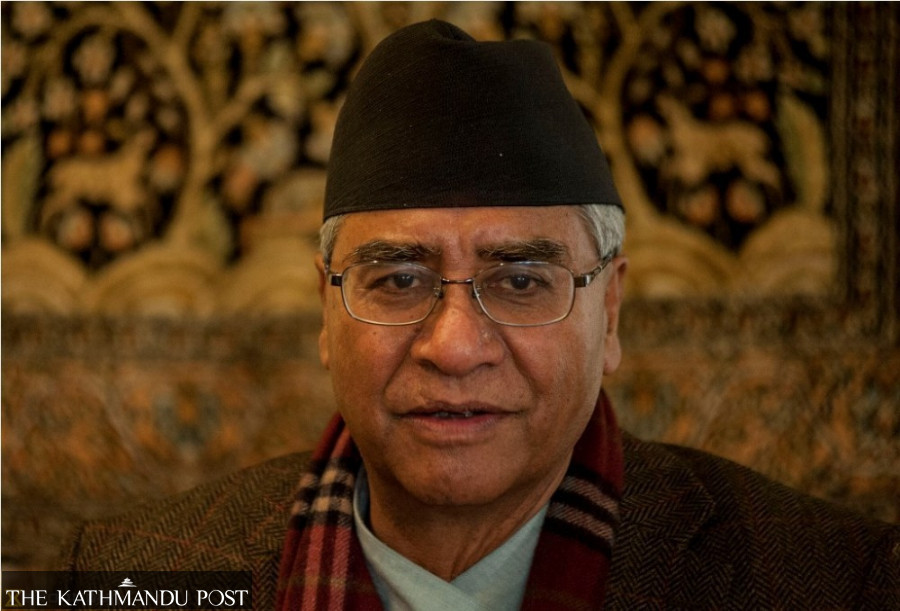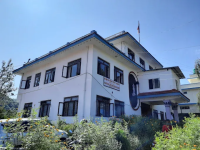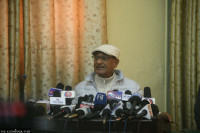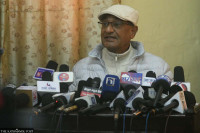National
Why is Nepal facing a government shutdown?
Nepal is currently facing a government shutdown, a situation that the country has never faced before.
Post Report
The Sher Bahadur Deuba government has not been able to spend money from the state coffers since Wednesday midnight. Nepal is currently facing a government shutdown, a situation that the country has never faced before. Such a halt in spending comes as yet another setback for Deuba who has not been able to expand his Cabinet even more than two months after his appointment as prime minister. The financial gridlock occurred due to disputes between the ruling parties and the opposition. There is no certainty yet on when the government will be allowed to spend from the state coffers as the budget must pass through both houses of the federal parliament.
Here is everything you need to know about the current financial deadlock.
What happened?
The erstwhile KP Sharma Oli had presented the budget for the fiscal year 2021-22 on May 29 this year through an ordinance, as the House of Representatives had been dissolved on May 21. On July 12, the Supreme Court overturned Oli’s decision and restored the House. But the court also showed Oli the door and ordered Nepali Congress President Sher Bahadur Deuba’s appointment as prime minister. The Deuba government on July 18 presented the ordinance before the lower house, which meant it had to get endorsed within 60 days—by September 16. Finance Minister Janardan Sharma presented a replacement bill for the budget ordinance on September 10 amid sloganeering from the lawmakers of the CPN-UML, the main opposition party. On September 15, a day before the bill’s passage deadline, the main opposition resorted to protests. Speaker Agni Sapkota adjourned the House meeting until September 20, which led to a government shutdown situation.
Why was the UML obstructing the House proceedings?
The UML on August 17 expelled 14 of its lawmakers, including Madhav Kumar Nepal and informed the Parliament Secretariat about the decision. The UML wanted Speaker Sapkota to issue a notice regarding its decision to expel the lawmakers. The Speaker did not. On August 26, Nepal split from the UML and formed his own party, CPN (Unified Sociliast), aided by an ordinance the Deuba government had introduced on August 18. The party is now a coalition partner in the Deuba government. Only on the 13th day of the UML’s decision to expel Nepal and 13 other leaders did Sapkota issue a statement saying there was no need to issue a notice as the Nepal group had already formed a new party, much to the chagrin of the UML. When the House session began on September 8, the UML resorted to obstruction and sloganeering. The UML believes Sapkota played foul and aided the party’s split and has regularly been staging protests in parliament since the start of the new session.
How did the finance minister present the replacement bill when the UML was obstructing the House?
On September 10, as soon as the House meeting began, the UML lawmakers started their protests. Some ran towards the well. Finance Minister Sharma was scheduled to table the replacement bill that day. The UML lawmakers were lining up to create a wall so as to stop Sharma from reaching the rostrum to present the replacement bill. Since Sharma had also tweaked the budget, taking out some of the programmes the UML government had included in the budget ordinance, the UML did not want the replacement bill presented in the House. The Speaker, however, used marshals to escort Sharma to the rostrum. Sharma read out the entire budget amid sloganeering by UML lawmakers who jostled to reach the rostrum, only to be stopped by marshals. The bill was presented amid pandemonium.
Did the Speaker try to resolve the House crisis?
He did. After the UML did not let the House function on September 12, two days after Sharma steamrolled the replacement bill through the House, Sapkota scheduled an all-party meeting for September 13. But the UML boycotted the meeting. The UML demanded that the Speaker should hold talks with them, not other parties, as the issue was related to them. The UML maintains that the Speaker must issue a notice regarding the sacking of the 14 lawmakers.
Are House proceedings possible when the House convenes on September 20?
The UML says it won’t let the House function until the Speaker issues the notice of expulsion of the 14 lawmakers. However, some say there is no need to do so because, firstly, they have already formed a new party and, secondly, the UML has filed petitions against Sapkota and the Election Commission. The court is scheduled to hear those cases on Monday. The UML, however, is firm on its demand that the Speaker must issue a notice as per its August 17 decision to expel those 14 lawmakers.
What is the government planning to do if the UML obstructs the House again on September 20?
A Nepali Congress leader told the Post earlier this week that the government would anyhow present the replacement bill to vote, regardless of the UML’s obstructions. According to him, they would do something similar to what they did on September 10 while presenting the replacement bill. Since it’s a voice vote, the Speaker will ask those to say “yes” who are for the passage of the replacement bill and “no” to those opposed to it. The ruling coalition believes the replacement bill would be passed from the next meeting.
But will that mean the end of the government shutdown?
No. The bill must be passed from both houses of the federal parliament. The government may not be able to bulldoze the bill in the upper house as easily as it believes it can do so in the lower house. Just like the UML believes Speaker Sapkota has been siding with the government, instead of playing a neutral role as a presiding officer, given his previous affiliation with the Communist Party of Nepal (Maoist Centre), others believe the National Assembly chair might follow the UML’s directives. Ganesh Timilsina was elected the National Assembly chair from the UML. If the UML, which has 24 members in the National Assembly, out of 59, obstructs the upper house meetings as well, the replacement bill may get stuck.
What are the consequences of a government shutdown?
There will be no problem in revenue collection. However, the government cannot issue any cheques or spend money from the state coffers on certain headings. Spending on development projects remains halted. Social security allowances given to the citizens won't be distributed. Civil servants will not get their salaries. Former civil servants’ pensions will be stopped.
Whose salaries and allowances won’t be affected?
The government shutdown won’t affect the salaries and allowances of the President, Vice President, Supreme Court justices, House Speaker, National Assembly chair, chief commissioners and commissioners of constitutional bodies and provincial chiefs.




 16.12°C Kathmandu
16.12°C Kathmandu












%20(1).jpg&w=300&height=200)

